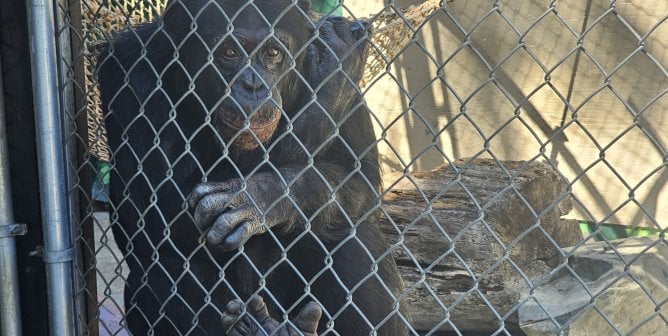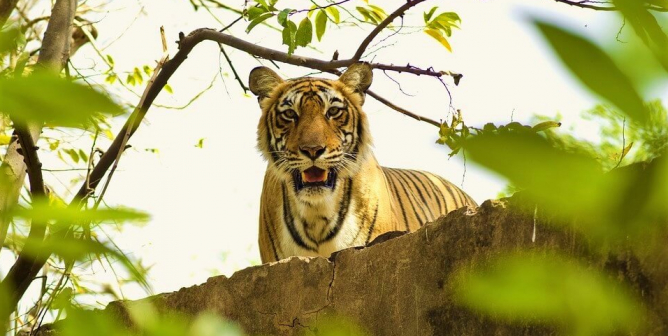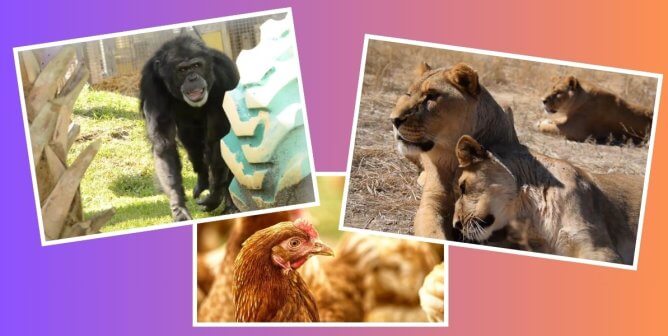What’s the Ideal Weight of a Tiger or an Elephant? You May Be Surprised
We rely on whistleblowers and good Samaritans to report details of abuse or neglect observed at roadside zoos and circuses—thanks to such tips, we’ve learned of shocking cruelty and scored victories for countless victims of the entertainment industry.
Did you know that captive elephants and big cats actually tend to be obese?
Use this guide to learn about body condition scoring to determine if an elephant or a big cat is emaciated or obese. And keep reading to find out what you can do if you witness something alarming at a facility where animals are held.
What’s the Ideal Weight of an Elephant?
Elephant body condition is usually scored on a five-point scale. A score of 3 is ideal, 1 is very thin, and 5 is obese. (See the chart below.) These scores are based on observations of certain key points on the body, such as the ribs and backbone. African and Asian elephants can both be assessed using this scale:
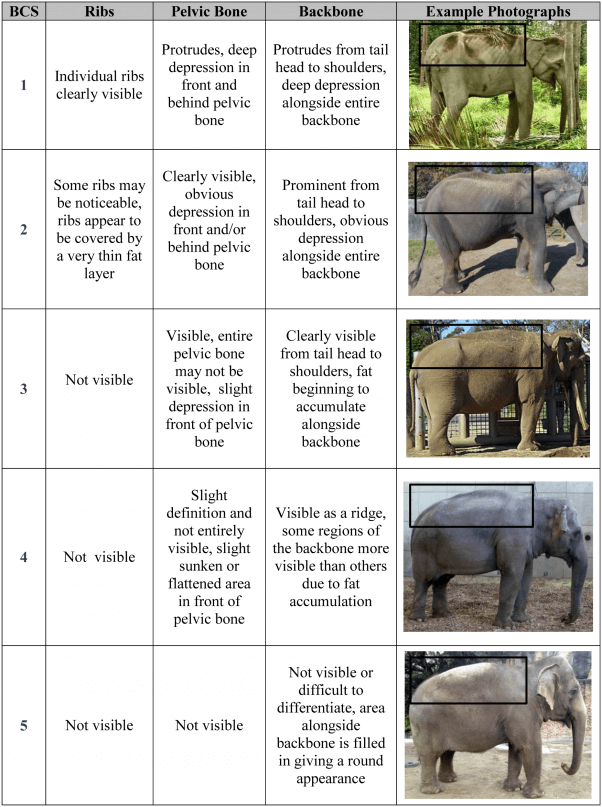
As mentioned above, elephants in captivity tend to be overweight. Obesity in elephants is actually considered a welfare issue, as it’s associated with arthritis, foot problems, cardiovascular disease, ovarian cycle abnormalities, and even shorter life spans.
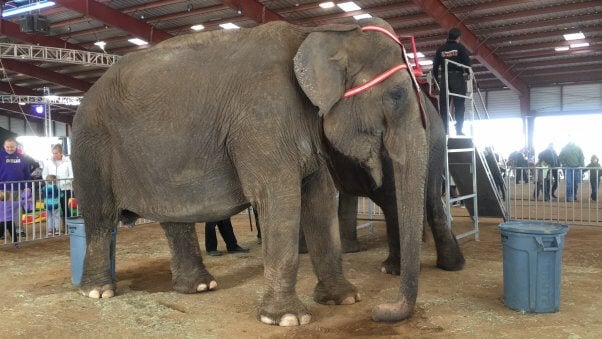
Elephants used for circuses—such as Viola, above—are subjected to an inadequate exercise and movement routine. They’re hauled around the country in trailers and chained or confined to temporary pens in arena parking lots when not performing. Space for adequate exercise or foraging for these animals is virtually non-existent, causing many to be overweight.
On the other end of the spectrum, Tikiri is an extreme example of what an underweight elephant might look like:
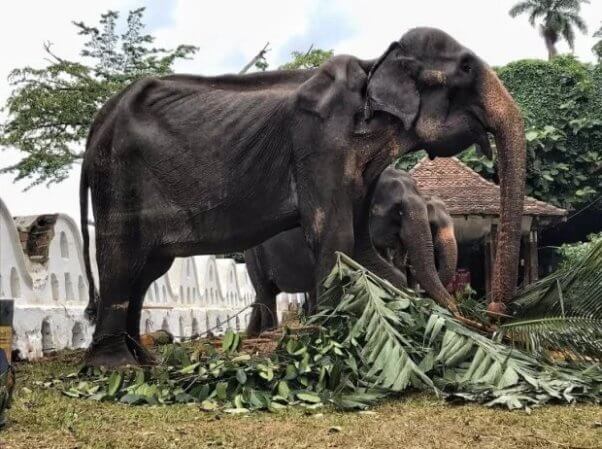
A recent study found that of 22 African elephants observed in zoos, 33% were obese. This is because they live in enclosures a fraction the size of their natural range and have limited opportunities for exercising and foraging.
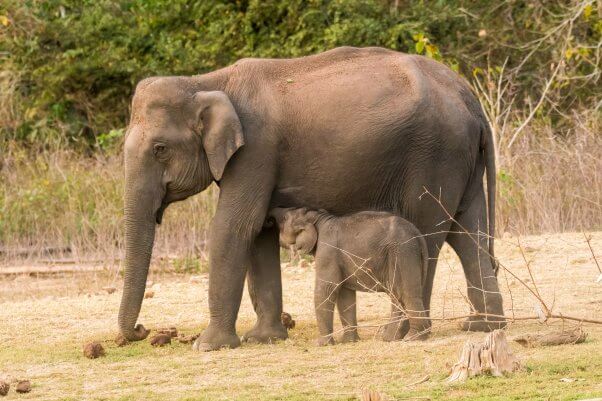
Elephant Fun Facts
Researchers have repeatedly documented compassion in elephants, who have been observed removing tranquilizer darts from downed friends. They also spread dust on their wounds to protect against flies. Get a copy of Animalkind to discover more fascinating facts about elephants and other animals.
What’s the Ideal Weight of a Tiger and Other Big Cats?
Just like captive elephants, captive big cats tend to be overweight, which can cause liver problems, arthritis, respiratory and heart issues, and thermoregulatory problems as well as joint swelling (hygromas) and skin thickening (especially when combined with living on a hard surface, such as concrete).
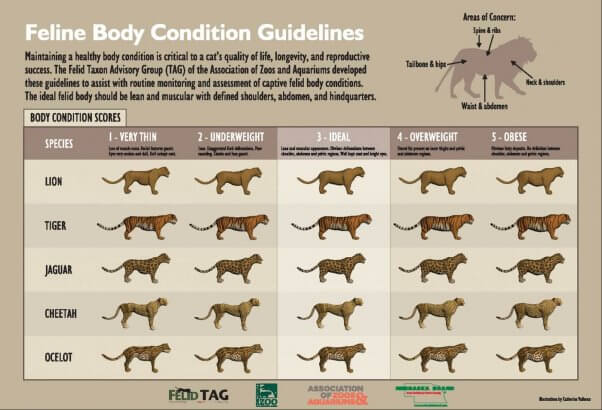
Similarly, they have far less space to exercise, run, and roam than they would in their natural habitat. Lions and tigers, for example, traverse up to 500 square miles of territory—but big cats at roadside zoos and in traveling acts live inside enclosures that are more than 100 times smaller.
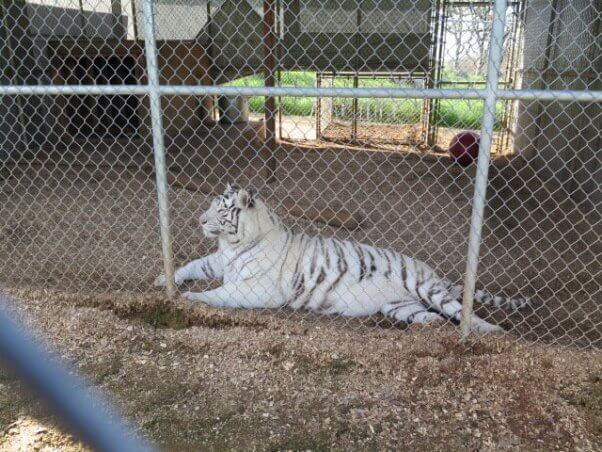
The ideal feline body is lean and muscular with defined shoulders, abdomen, and hindquarters.
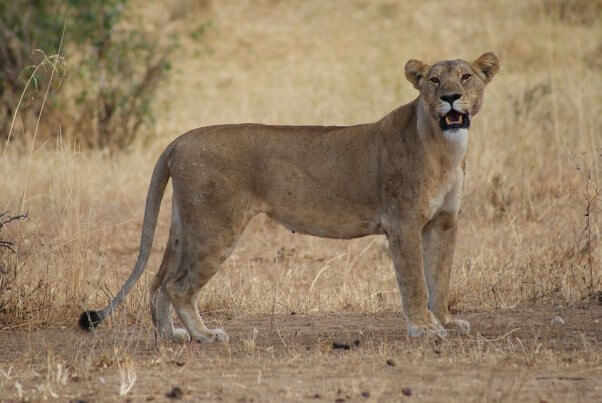
As with elephants, big-cat body condition is usually scored on a five-point scale. A score of 3 is ideal, 1 is very thin, and 5 is obese. The scores can be determined by looking at certain key points on the body, such as the hips, shoulders, and face.
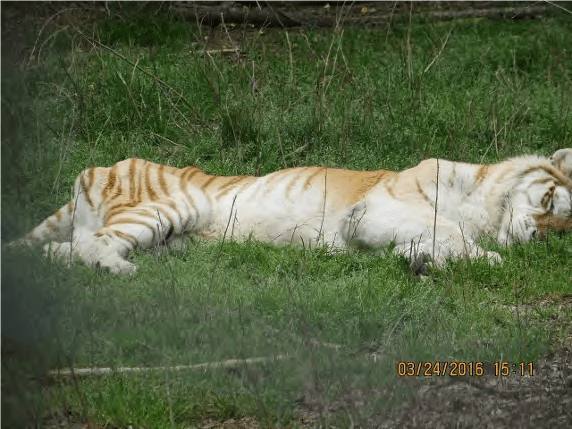
If observing big cats, note the following:
- Thin cats have bony faces and lack muscle, with obvious ribs and hipbones showing. Their coat and eyes are often dull.
- Overweight cats have fat deposits on their hips and stomachs, with little obvious definition on their pelvic, abdomen, and shoulder or neck areas.
The vast majority of the big cats in the U.S. are kept at dingy roadside zoos or used in traveling acts. They often don’t have access to structures for climbing, swimming, and other natural forms of behavior, making it harder for them to build muscle and lose weight. (Imagine how out of shape you would be if you were kept in a cage and denied proper nutrition and exercise for most or all of your life—you’d be painfully weak.) Many are improperly fed, whether because their handlers are unable or unwilling to buy good-quality food or they lack knowledge about these animals’ complex nutritional needs.
Big-Cat Fun Facts
Tigers are great swimmers and love the water—they can cross rivers 5 miles wide in a matter of minutes. And did you know that lions can determine the number of lions in an unseen pride by listening to their roars? Order a copy of Animalkind to discover more fascinating facts about tigers, lions, and other animals.
What to Do With All Your Newfound Elephant and Big-Cat Knowledge
Now that you’re an expert at scoring big-cat and elephant body condition, do you have something to report? If you think you’ve spotted a very thin or an extremely obese elephant, lion, tiger, or other big cat, please share your firsthand accounts at PETA.org/Abuse.
If you haven’t witnessed such neglect, you can still be a hero to animals—click on the buttons below to take action for elephants and big cats held captive at roadside zoos and in circuses.

